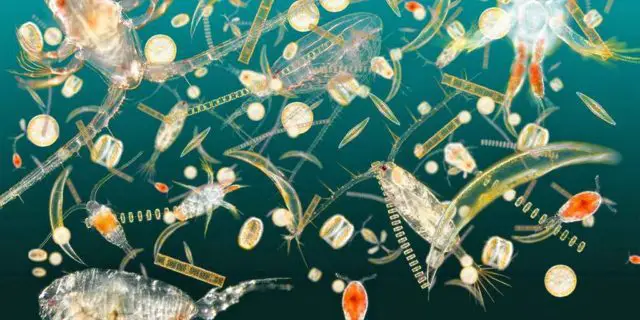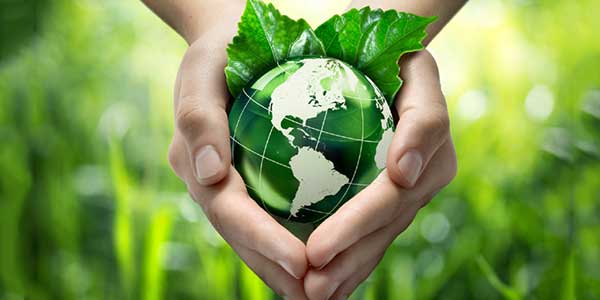By the end of the 21st century, much of the sea will have changed color. Marine phytoplankton, the base of the oceans, is suffering the impact of climate change, altering its composition and distribution. These organisms use chlorophyll to synthesize solar energy, being responsible for the green portion of the water. Now, a study has developed a model of how the color of the oceans will be throughout the century as it goes to the phytoplankton. With warming, the seas will remain blue or green, but with new tonalities. And the change of color indicates a whole chain of changes in marine life.
The sea is blue because it reflects blue light. When the sun’s rays hit the water molecules, most of the spectrum of light (the rainbow in which it decays) is absorbed. Only the blue band (around 443 nanometers wavelength) bounces and, as with the sky, the sea looks blue. But it is not a pure color. In fact, everything is shades of blue to greenish, with turquoise in between. And this is because in the sea there is not only water, there are also plants, microorganisms and other types of organic matter that give it its color palette.
Phytoplankton was, until recently, a conglomerate of microscopic algae that, like the rest of plants, have a green pigment, chlorophyll, to carry out photosynthesis. And this makes the light that reflects most green, hence the greenish tones of many parts of the seas. Although now biologists have complicated things, and in that conglomerate, there would also be cyanobacteria and protists, all these microorganisms live on the energy they get from light and solar and, to synthesize it, they also use chlorophyll, reinforcing the green tones. For a few decades, observation from satellites has served to infer the presence of chlorophyll as an indicator of marine biodiversity.

Now, a group of researchers from universities in the US and Europe has developed a model to study how climate change is affecting phytoplankton and, therefore, the color of the sea. Most of global warming is being absorbed by the oceans. It is estimated that, if nothing is done to reduce CO2 emissions, the average global temperature of the sea surface will rise by 3º by the end of the century. If so, there would be a series of impacts on the cycle of the ocean life basis, which is phytoplankton. Well, they would already be producing.
“The warming of the oceans alters ocean circulation and the [water] portion of the deep ocean that emerges to the surface, and phytoplankton needs light (its energy source) and nutrients, and most of these nutrients come from depths”, explains a researcher at the Massachusetts Institute of Technology (MIT) and lead author of the study, Stephanie Dutkiewicz. The changes induced by the warming are causing fewer nutrients to reach the surface layer, so it is likely that phytoplankton will decrease in many parts of the ocean”, adds this expert in the biogeochemistry of the sea.
One of the biogeochemical processes most affected by climate change is that of ocean circulation: according to temperature differences, waters move both vertically (in depth) and in latitude (to and from the poles). With heating, this circulation is slowing down, the stratification of the water column increases and the mixing of deep and shallow water is reduced. All this explains that the contribution of nutrients, in particular, the macronutrients, is being reduced.
“Temperatures also affect how fast phytoplankton grows, some species adapted to hot water do it faster than others adapted to the colder one, so with a warmer ocean in regions where there are more nutrients, some more can increase the amount of phytoplankton”, recalls Dutkiewicz. So there will be regional changes in the composition, quantity, and distribution of communities of marine microorganisms that color the water.
According to the results of the study, published in “Nature Communications”, much of the ocean is already changing color and, by 2100, they estimate that even more than 50% of the marine surface could have another color. “The changes will be very subtle, the human eye probably will not see them, but the optical sensors will”, clarifies the MIT researcher. “Yes, the sea will remain blue; some regions, large areas to the north and south of the equator, the subtropical turns, will possibly be even bluer”, he adds. Meanwhile, green will become more present in polar waters and in tropical coastal waters where phytoplankton carries heat better.
The model they have used to study the evolution of color has been used to predict changes in phytoplankton, local algae explosions or ocean acidification. Now, in the parameters they have included, they have added other elements present in the water, in addition to chlorophyll. In particular, detritus and other dissolved organic matter. They recognize, however, that in order to better match the color of the sea in the future, other microscopic constituents of seawater must be included, such as bacteria, minerals or the sea’s own salinity.
Jefferson Keith Moore, a marine biologist at the University of California at Irvine, published a study in the journal “Science” last year on the effects of climate change on phytoplankton and the global consequences of its reduction. He also published a summary of the same on the website of the World Economic Forum “Plants of the Sea”, as phytoplankton is called, need, in addition to sun, nutrients such as nitrogen or phosphorus. If the ocean circulation is slowed by global warming, these nutrients will not reach the surface.
Although the study refers to a somewhat distant temporal scenario (the year 2300), their results show that, having fewer plants, there will be less zooplankton (microscopic animals) from which small fish can feed, which will reduce their populations, which it would confront the biggest predators, such as dolphins, sharks, or humans. And everything will start with a change in the tone of the blue of the sea.

